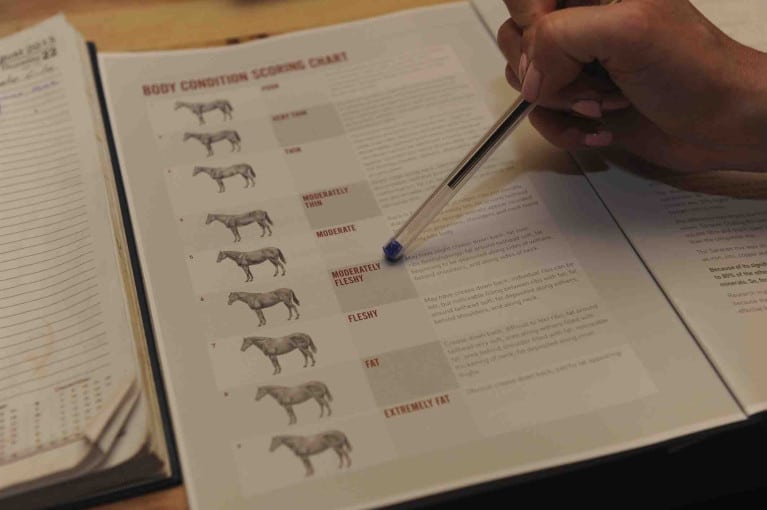Discover how to fat score your horse, then download our handy chart

Most of us will have come across the term ‘condition scoring’, but why has the latest research led to a decision that ‘fat scoring’ is a more accurate term? Teresa Hollands from Dodson&Horrell explains…
Looks can be deceiving
As horse owners, we often make a judgement on a horse’s condition from simply looking at that horse. If the horse has a nice, bulky outline we would say he was in good condition, whereas we might describe a lean horse as being in poor condition. We would take into account the horse’s overall appearance in terms of coat and feet, for example, and this assessment would fit with the verb definition for condition from the dictionary, which is: ‘to give people or animals a treatment to improve general health, soundness, readiness for use, appearance or performance’.
Ask the experts
If your vet or nutritionist said to you that your horse is in very good condition or your horse is fat, which would you be pleased to hear and which would you be upset to hear? Well actually, they could mean the same thing – especially if you continue to use the term ‘condition score’ to describe the measurement of fat cover on your horse.
 A fat horse is actually in poor condition, unhealthy and not fit for purpose. He certainly isn’t fit to function as a horse should. For example, a show horse can look big and bulky, but should have a fat score of 2-3!
A fat horse is actually in poor condition, unhealthy and not fit for purpose. He certainly isn’t fit to function as a horse should. For example, a show horse can look big and bulky, but should have a fat score of 2-3!
Why? Because the bulk is due to muscle, not fat. In the same vein, a fit racehorse should have a fat score of 2. These two horses are very different in their overall body shape – racehorses will be lean and mean like a greyhound, whereas a show horse will be built more like a human weight-builder. What differentiates their shape is muscle – NOT fat!
So when you fat score your horse, you are only feeling for fat – you are not measuring muscle.
The 0-5 fat scoring scale
To find out your horse’s fat score, use the fat scoring chart below. Remember to look at his quarters, back, ribs, neck and shoulders.
Download the chart – click here
Did you know…?
- Most of us (60%) change the visual assessment of our horse’s fat score when we feel/manually palpate them
- Horses with a fat score of more than 3.5 are at greater health risks of foot changes, musculo-skeletal problems and dermatological problems
- Farmers use a similar 0-5 system to fat score their pigs, cows and sheep before sending them to market. The more fat they have on them, the less they are worth, as they are paid for the meat (muscle).
- Young horses (under seven years) should be thought of as young teenage boys – long and lanky – because their biology isn’t ready to let them muscle up. However, compare that to a 25-year-old man and you appreciate that biology has allowed for muscle development. Thus if you are producing young horses with a ‘bulky’ outline, then you are producing fat horses.
* Research presented at BEVA (British Equine Veterinary Association) Congress
















